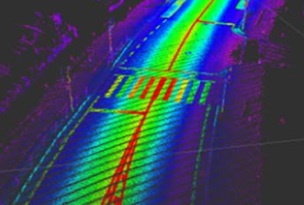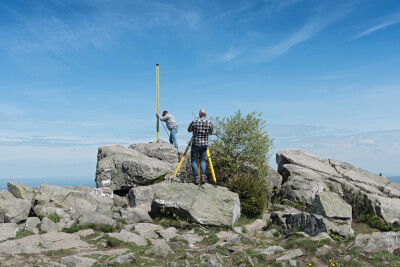3D-LiDAR point cloud and road map. Source: Pioneer
I have very clear memories of my first encounter with laserdiscs. I was younger (much younger) and arrived at my local library to watch their copy of Charlton Heston’s The Ten Commandments for a school project. When I arrived at the front desk, the clerk explained that they had the film only on laserdisc… and then she handed the gargantuan things to me. To an eight or nine year old, the discs felt like the size of the actual ten commandments.
In the years since, Laserdisc has become something of a punch line, but it seems the technology may prove very, very useful after all–as a stepping stone toward less expensive LiDAR.
Pioneer has announced the trial manufacture of their 3D-LiDAR product, which they call “a high-performance, compact and low-cost system” for automated vehicles. The 3D-LiDAR system makes heavy use of Pioneer’s knowhow gained from manufacturing laserdiscs for three decades, and the company hopes that the price of the system will drop below $83 within the next 10 years.
IT World quotes a Pioneer spokesman as explaining that there are similarities in manufacturing techniques for optical pickups and LIDAR systems. He also said that the company is using its know-how in signal processing, chip development and optical module manufacturing for the LiDAR technology.
But 3D-LiDAR will not only be a sensor. It is also a networking system which enables all nearby vehicles equipped with 3D-LiDAR to communicate with one another and share mapping data.
As Pioneer explained in a statement, the company plans to develop an “efficient creation and operation system for advanced map data (“data ecosystem”) enabling differences in map data to be automatically processed, with low costs of operation, by collecting surrounding environment in real-time from general use vehicles equipped with 3D-LiDAR as well.”
If you’ve ever used Waze, which crowdsources smartphone GPS data from drivers using the app to create a crowdsourced real-time traffic map, you’ve likely seen a product like this in action before.
Pioneer calls the 3D-LiDAR a step toward an “even safer, more reliable, and more comfortable “automobile society” in the future,” probably referring to the idea that autonomous cars capable of communicating with one another may usher in a new era of computer-managed public transportation and traffic management.
Either way, I’m sure we all hope that this technology turns out to be more successful than laserdisc. Look for the 3D-LiDAR in business-use vehicles by 2017, and private vehicles by 2018.






